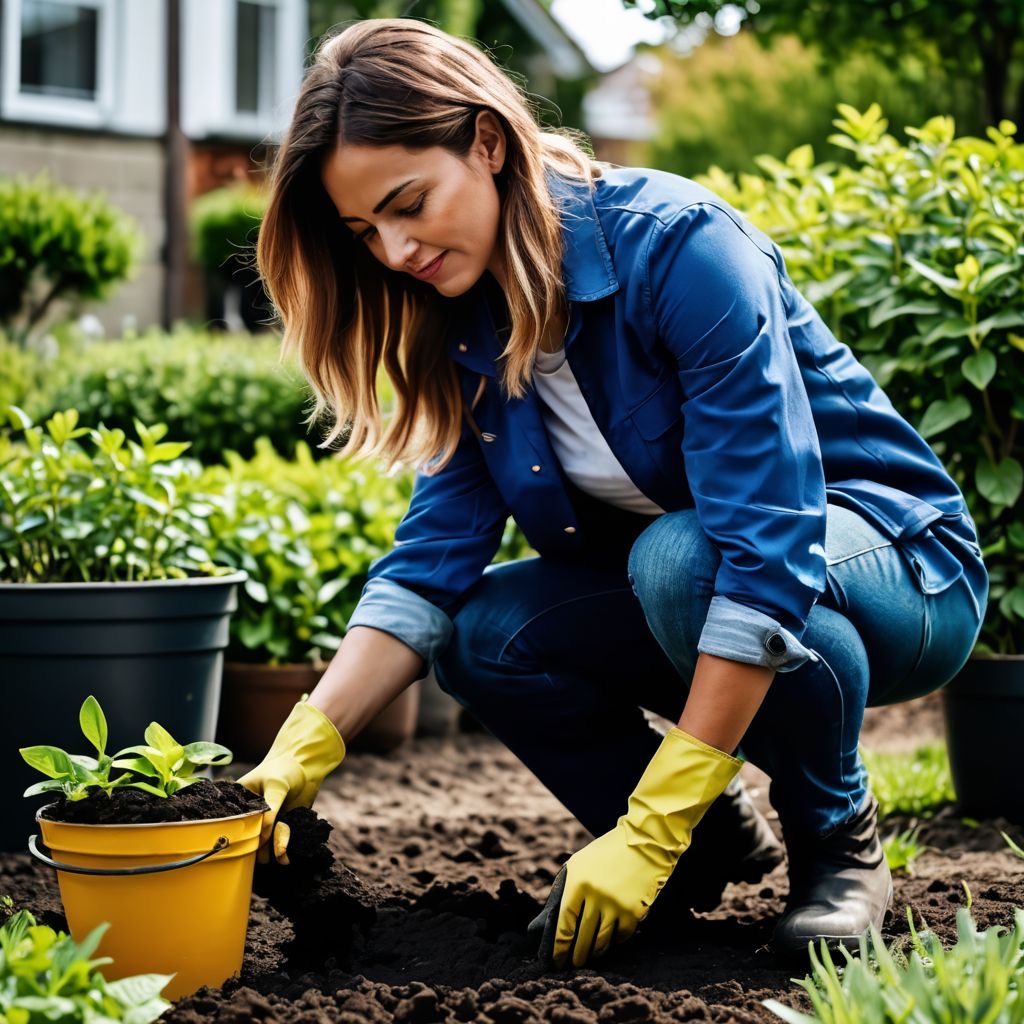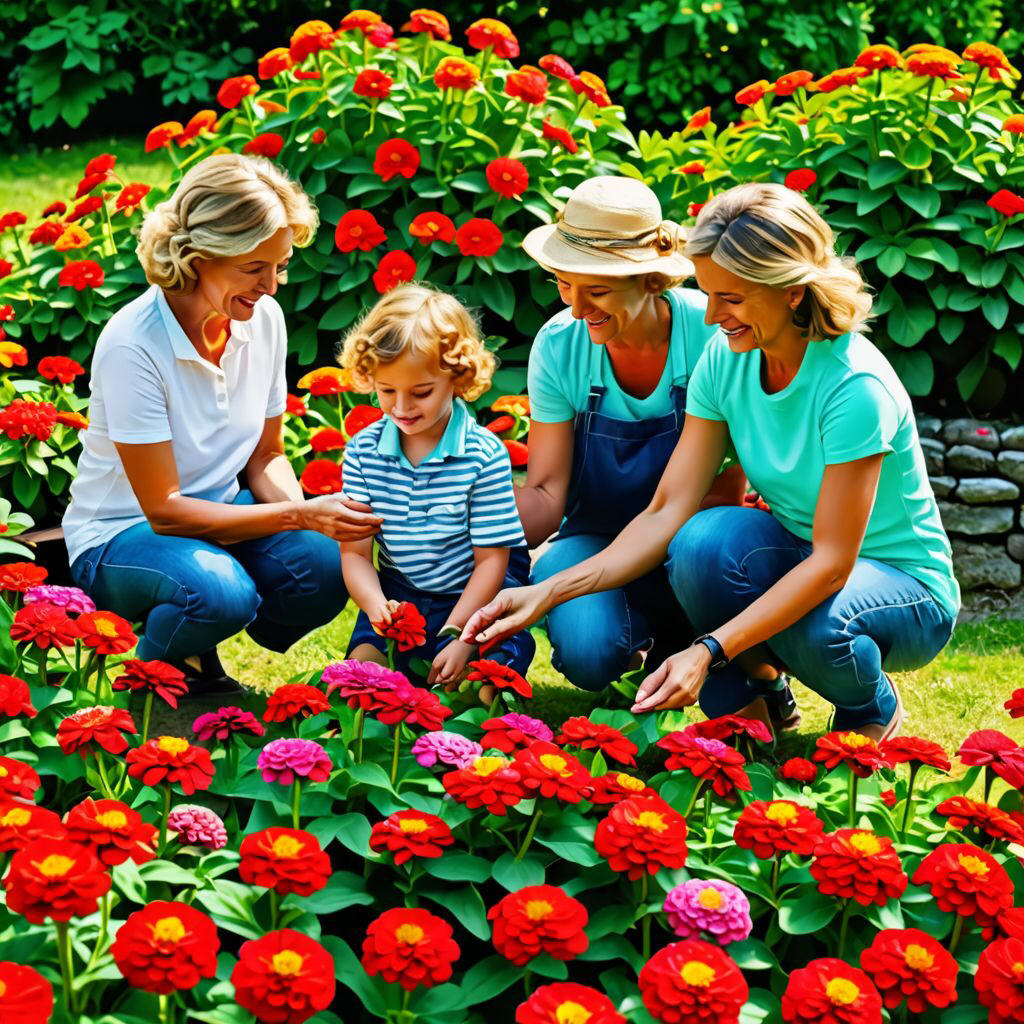
Table of Contents:
1. Introduction
2. What is Companion Planting?
3. History
4. Benefits
- 4.1 Pest Control
- 4.2 Improved Soil Health
- 4.3 Enhanced Growth and Yields
- 4.4 Maximizing Space and Resources
5. Popular Pairings
- 5.1 Tomatoes and Basil
- 5.2 Carrots and Onions
- 5.3 Beans and Corn
- 5.4 Marigolds and Everything
6. Techniques
- 6.1 Intercropping
- 6.2 Trap Cropping
- 6.3 Succession Planting
- 6.4 Planting by Seasons
7. Common Mistakes
- 7.1 Ignoring Plant Needs
- 7.2 Overcrowding
- 7.3 Poor Timing
8. Practical Tips for Winnipeg Homeowners
- 8.1 Selecting the Right Plants
- 8.2 Utilizing Local Resources
- 8.3 Creative Garden Ideas
9. Designing Your Companion Planting Garden
- 9.1 Flower Garden Integration
- 9.2 Creating a Perennial Companion Plot
- 9.3 Incorporating Garden Planters
- 9.4 Vertical Gardening Techniques
- 9.5 Rotating Seasonal Use
10. Conclusion
1. Introduction:
Ah, gardening! There's something almost magical about digging your hands into the earth, planting seeds, and watching life unfold. If you’re like most Winnipeg homeowners, you've probably strolled through your local botanical garden or admired your neighbor's immaculate rose garden, dreaming of transforming your yard into a lush Eden of flora.

While you may have your beautiful flower garden visions, let me introduce you to a time-tested trick that can elevate your gardening game: companion planting.
What is this, you ask? Well, think of it as a matchmaker for your plants. It’s the delightful practice of pairing plants together to mutually benefit one another. Imagine tomatoes and basil sharing the same growing space; it’s like a dinner party where everybody leaves happy! As gardeners, being in tune with plant relationships can help increase yields, deter pests, self-fertilize, and simply create a thriving ecosystem right in your backyard.
In this blog post, we’ll explore all the ins and outs of this strategy, from its historical roots to the practical benefits and tips tailored especially for you, the conscientious Winnipeg gardening aficionado. We’ll dive into which plant pairings are the most dynamic duos and which common pitfalls to avoid, ensuring your home garden flourishes. So roll up your sleeves, grab your favorite pair of gloves, and let’s cultivate a garden that not only grows but thrives—together!
Contact us today for your free estimate.

2. What is Companion Planting:
At its core, this simply refers to the strategic placement of certain plants near one another to promote growth and deter pests. It's akin to creating a symphony in your backyard landscape design, where different species harmonize beautifully in what could otherwise be a chaotic plant ecosystem.
This botanical relationship generally hinges on mutual benefits—some plants can repel insects harmful to others, while others might enhance nutrient uptake and ultimately boost crop yields. For instance, garden ideas that revolve around these beautifully organized plant pairings create a synergy that elevates the earth's natural processes, often resulting in healthier plants overall.
3. Its History:
Companion planting isn't just a trendy gardening idea; it has roots steeped in centuries of agricultural wisdom. Traditionally, numerous cultures have practiced landscape design with an eye for plant relationships. The native peoples of North America utilized companion planting extensively and introduced what modern gardeners now call the "Three Sisters" method, featuring corn, beans, and squash.

Together, these crops create a symbiotic environment: the corn provides support for the beans, the beans fix nitrogen back into the soil, and the squash acts as a natural weed barrier.
The indigenous wisdom surrounding plant relationships evolved into broader practices, noted throughout agricultural history worldwide. Ancient Egyptians paired onions with cabbage to keep pests at bay.

The classic practice of planting marigolds among vegetable gardens arose to combat nematodes and aphids, making them a garden hero. Today, as we embrace sustainable gardening methods, we look back and learn from the ages past, refining techniques to fit our modern society.
4. Benefits:
Now that we understand what companion planting is and its historical significance, let's dig deeper into the benefits that make it an essential strategy for homeowners and gardening enthusiasts alike.
Contact us today for your free estimate.
4.1 Pest Control
One of the most alluring benefits of companion planting is its natural pest-control capabilities. For example, certain fragrant herbs can confuse or repel pests, simplifying yard maintenance Winnipeg for homeowners perturbed by unwanted visitors. The scent of basil discourages whiteflies which, in turn, support the health of tomatoes planted nearby. No more chemical sprays—nature's got your back!
4.2 Improved Soil Health
You want your soil to be rich and vibrant, right? Companion planting can lead to healthier soil. Plants can influence their neighbors by fixing nitrogen or improving soil structure. Legumes, like peas and beans, increase nitrogen content, benefiting nearby leafy greens. By mixing plant types, you not only maximize yields but help contribute to a robust ecosystem. Bye-bye, impoverished topsoil!

4.3 Enhanced Growth and Yields
It’s simple math: when plants work together, they grow stronger! Many gardeners using companion planting report notable increases in growth and yields. The aforementioned corn, beans, and squash create a natural ecosystem where each plant’s unique strengths support one another. This propulsion can lead to an impressive harvest, making season preparations less nerve-racking and more fruitful.
4.4 Maximizing Space and Resources
For those with limited space, think of companion planting as your personal living Tetris game. Planting different crops together allows gardeners to maximize their growing area. You can fit more together in your home garden design, utilizing vertical spaces and shading to promote growth.
5. Popular Pairings:
Alright, now that you're convinced of the benefits, let’s get to the good stuff! Here are some popular, tried-and-true companion plant pairings that any Winnipeg homeowner can easily implement.
5.1 Tomatoes and Basil
Ah, the classic combination! Tomatoes and basil not only complement each other in your favorite dishes, but they also thrive together in your garden. Basil repels pests like hornworms and whiteflies that target tomatoes, while also encouraging a more productive tomato plant. It’s a culinary win-win—that’s what I call synergy!
5.2 Carrots and Onions
It’s a match made in vegetable heaven! The strong scent of onions can confuse carrot flies, preventing them from laying their eggs in carrot beds. Plus, the taproot of carrots will not compete with the more shallow roots of onions, allowing both to flourish in the same space. Talk about a veggie partnership!
5.3 Beans and Corn
This duo brings the Three Sisters method full circle. Corn provides a natural trellis for pole beans to climb, while beans add nitrogen back into the soil, benefiting their tall sibling. Squash can also fill in the space below, keeping moisture in the soil and serving as natural weed control.
5.4 Marigolds and Everything

The MVP of the companion planting world, marigolds have a magical ability to repel nematodes and certain pests. They can be scattered throughout your flower garden or even tucked between vegetable plants—a magical flower ready to defend its comrades!
6. Techniques:
It’s time to level up! Now that we know which plant pairs are a match made in gardening heaven, let’s delve into some techniques that will elevate your companion skills.
6.1 Intercropping
Intercropping is like your garden's dance party! This technique involves planting two or more crop species close together to maximize space and resources. Imagine a colorful tapestry of plants where each type provides nutrients to its companions, allowing for incredible biodiversity in your garden.
6.2 Trap Cropping
Have you ever sacrificed a "decoy"? Trap cropping aims to attract pests to specific plants, allowing main crops to thrive. This tactic is particularly effective in commercial settings but can also help in residential gardens. The classic example: planting radishes or mustard greens to lure pests away from your cabbages.
6.3 Succession Planting
This technique allows for various plants to be coaxed in throughout the growing season: start with fast-growing plants like lettuce or radishes, then follow them up with slower growing companions, such as broccoli or kale. When one crop finishes, the next can take its place! This maximizes your garden space and produces food all season.

6.4 Planting by Seasons
Understanding and leveraging seasonal differences is vital in companion planting. Some plants thrive in the coolness of spring, while others prefer the heat of summer. Knowing these differences can lead to seamless transitions within your home garden, ensuring a bountiful yield year-round.
7. Common Mistakes:
Even seasoned gardeners face challenges! Here are some common pitfalls to avoid in your companion planting journey.
7.1 Ignoring Plant Needs
Remember, each plant has its preferences! Some prefer full sun while others thrive in shade. Planting incompatible species together could lead to poor health or even failure. Make sure to research or consult a gardening handbook to identify which plants work well in your particular landscape design.

7.2 Overcrowding
More isn’t always merrier! Be careful not to overcrowd your plantings. Each plant needs its space and sunlight to thrive. Adequate spacing prevents competition for nutrients and resources, allowing plants to flourish individually and together.
7.3 Poor Timing
Timing is key! Whether you're sowing seeds or deciding when to plant companion pairs, being attuned to the right seasons ensures your plants coexist harmoniously. Not paying attention to planting charts can lead to missed opportunities for a bountiful harvest.
Ready to chat about your landscaping goals?

Reach out by call or text to: 204-229-9789 or click here to submit your information today to arrange a “no obligation” introductory phone call. We look forward to helping you transform your yard.
Tips on how to prepare for a consultation meeting with a landscape contractor
8. Practical Tips for Winnipeg Homeowners:
Now you're ready to implement these techniques in your very own home garden! Here are some tailored tips to ensure you flourish in your planting ventures.
8.1 Selecting the Right Plants

When planning your companion garden, consider the local climate and seasonal variations. Choose plants that can withstand Winnipeg’s unique growing conditions. Look into consulting with one of the many landscaping companies Winnipeg gardeners have come to rely on or talk to one of our local garden centers for information on plants that grow well together.

8.2 Utilizing Local Resources
Tap into local resources like community gardens, gardening groups, and workshops focused on techniques for sustainable practices. Learning from fellow Winnipeg gardeners is invaluable as you design your garden plan, and networking can lead to friendships that last longer than your plants!
8.3 Creative Garden Ideas
Get creative with your garden designs! Incorporate layers of plantings to maximize space—think vertical gardening or using planters at different heights. A well-designed garden is not just functional; it’s a visual feast, too! Experiment with flower bed design to create stunning displays that also serve your companion planting goals.
9. Designing Your Companion Planting Garden:
With all this knowledge, you can create a thriving companion planting garden that dazzles the eye and fills the plate. Here are some common considerations for designing your masterpiece.
9.1 Flower Garden Integration
By Incorporating companion plants into your garden design. Not only will you attract bees and beneficial insects, but you'll also create stunning visual contrasts. For instance, planting vibrant flowers with vegetables can create a beautiful edible landscape.
9.2 Creating a Perennial Companion Plot
Consider establishing a perennial companion design plot that can return year after year. This could encompass a mix of herbs, such as chives and rosemary, layered with flowering plants like daisies or lavender, creating an ecosystem that turns your garden into a biological wonderland.
9.3 Incorporating Garden Planters
Using garden planters creatively can significantly enhance your companion planting design. These versatile containers can be placed around your yard, allowing you to introduce companion combinations in small or limited spaces. They are perfect for urban settings or for those who may not have ample ground space to cultivate a traditional home garden.
Benefits and Ideas for Planters
When arranging your planters, consider using a diverse mix of plants that can thrive together. For example, a planter filled with basil, cherry tomatoes, and marigolds creates not only an aesthetically pleasing display but also a functional ecosystem that deters pests, enhances growth, and provides a fresh supply of ingredients for your kitchen. Depending on your gardening goals, you can also stagger the plants in each planter based on their growth habits. Taller plants like tomatoes should be placed in the center or back of the planter (if against a wall), surrounded by shorter herbs or flowers that won’t overshadow them.
Transforming Winnipeg Landscapes with quirky garden planters.
9.4 Vertical Gardening Techniques
Additionally, experimenting with vertical gardening techniques in your planters can maximize your use of space. Consider using trellises or decorative stakes for climbing plants, enabling you to create a multi-dimensional garden right on your patio or balcony. Not only does this add visual interest, but it also allows for better air circulation and sunlight exposure, many plants need to flourish.
Best vines and Climbers For Your Winipeg Garden Design
9.5 Rotating Seasonal Use
Another advantage of planters is the ability to rotate seasonal crops easily. With changing seasons, you can transition between summer crops like zucchini and peppers in the warmer months, then shift to fall crops such as kale and late-season herbs. The flexibility of containers allows you to respond dynamically to environmental changes, ensuring that your garden stays productive throughout the year.
In essence, thoughtfully designed planters can enrich both your gardening experience and the overall aesthetic appeal of your outdoor space while adhering to the principles of companion planting. Whether you use a few small containers or larger pots, these arrangements can turn your space into a flourishing urban garden that is both practical and beautiful.
10. Conclusion:
Companion planting is more than just a trendy method; it's a rich tapestry woven from centuries of wisdom, experimentation, innovation, and sustainability. For Winnipeg homeowners, recognizing the advantages of this practice can help you cultivate not just plants, but also a sustainable haven right in your backyard.
By embracing companion planting, you'll be armed with knowledge to deter pests, improve soil health, and yield plants that flourish in harmony—imagine the satisfaction when your efforts yield an abundant crop and a stunning garden that wows friends, neighbors, and your family alike.
So, whether you’re growing herbs in planters on your porch, designing a vibrant vegetable patch, or creating a mixed display in your backyard, remember the lessons learned here: your home garden can be a thriving ecosystem where plants band together for mutual benefit. With the right companion planting techniques and a sprinkle of creativity, you can transform your garden into a beautiful sanctuary. Now, grab your seeds, gather your plants, and let’s cultivate a botanical paradise that benefits everyone!

Don't miss out! Click here to subscribe today and get the latest blog posts delivered straight to your inbox.



